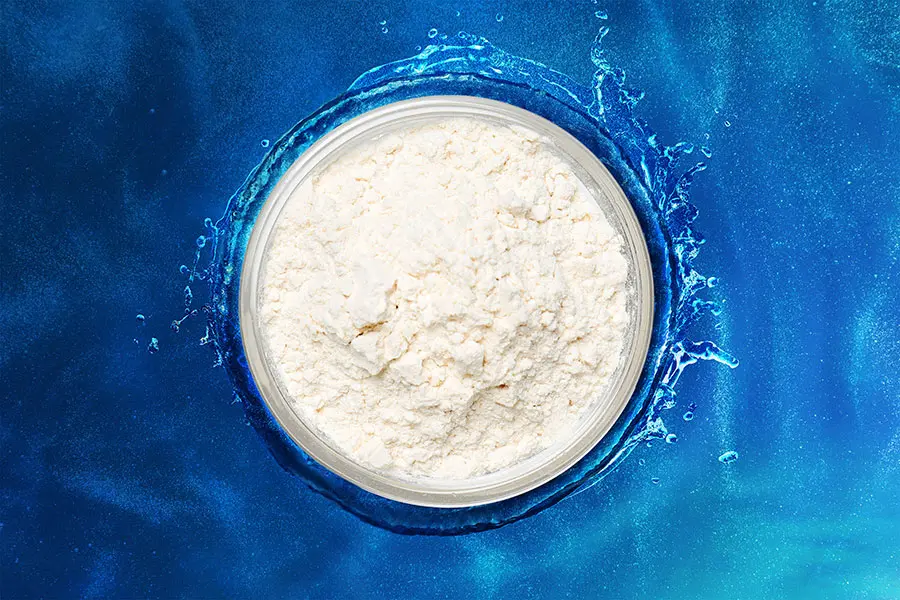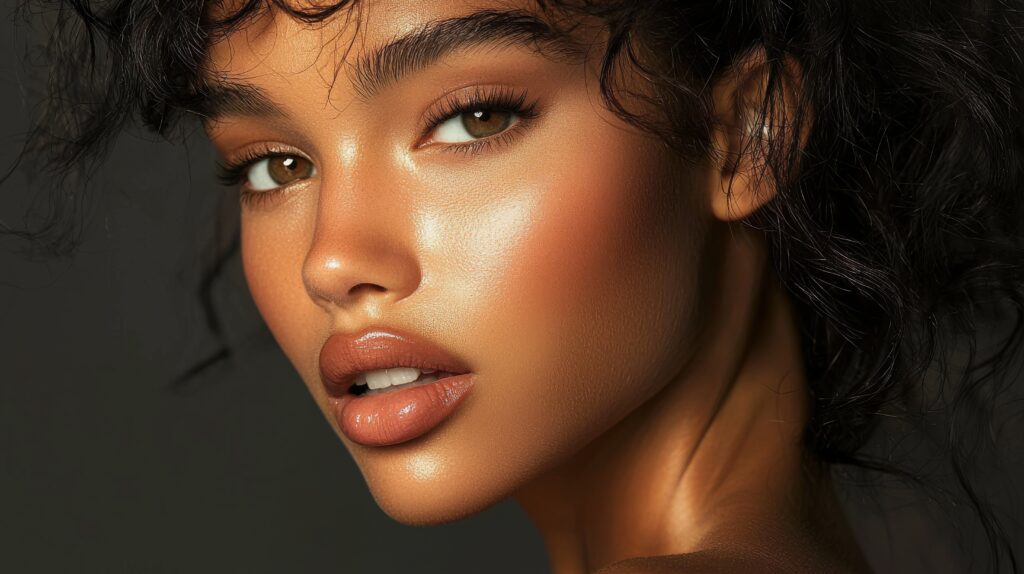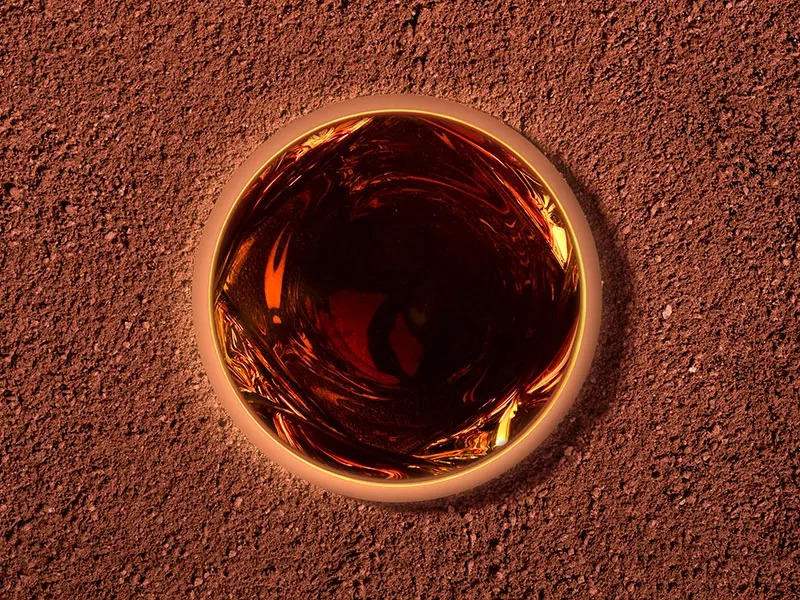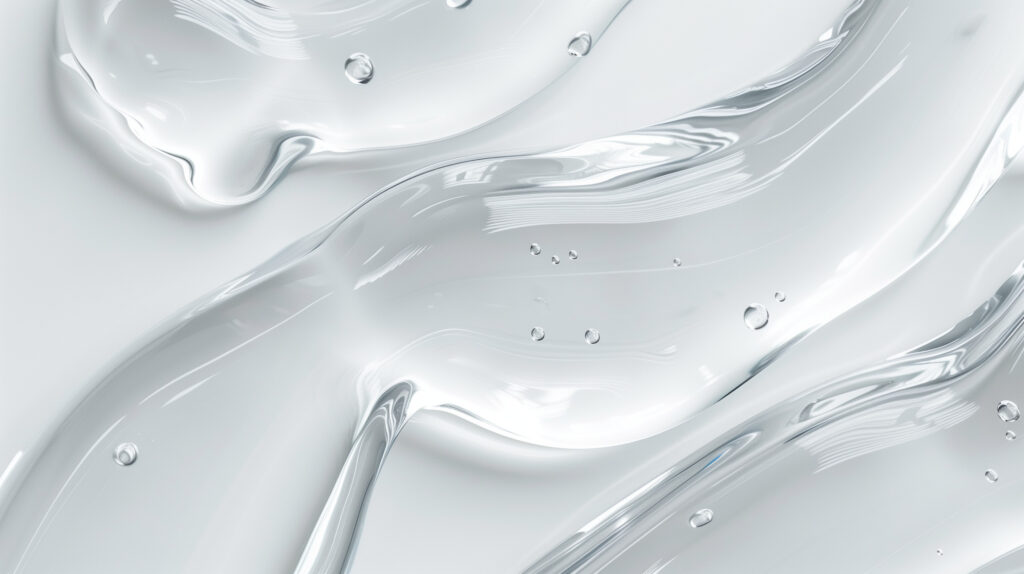Blurring the Line Between Cream and Powder in Hybrid Eye Products
In the cosmetic lab, transformation is more than an artistic vision—it’s a measurable outcome. Over the past several years, we’ve witnessed a rising demand for hybrid textures in eye cosmetics. From cream eyeshadows that settle into silky powders, to fluid concealers with powder-matte finishes, consumers are increasingly gravitating toward products that evolve on contact. Their expectations are simple: smooth application, minimal fallout, long wear, and a sensory experience that feels elegant.
Meeting those expectations isn’t magic—it’s formulation science. And in this shift toward multifunctional, texture-transforming formulas, one ingredient stands out: RESIFA™ SOLESPHERE™, a porous silica powder designed with precision to elevate sensorial feel and functional performance.
Let’s examine why SOLESPHERE™ makes sense when you’re formulating hybrid eye products—and how its physicochemical profile solves specific formulation challenges.
Understanding Hybrid Eye Formulas
Hybrid eye products often aim to bridge incompatible characteristics: softness with staying power, pigment intensity with blendability, and glide with grip. These are not opposing qualities, but they must be carefully balanced.
Take a cream-to-powder eyeshadow. In its container, it needs to remain pliable enough to apply smoothly. But once it reaches the skin, it must undergo a textural transformation—reducing oiliness, improving adherence, and leaving a finished feel that resists creasing.
The success of such products hinges on the control of oil-phase dynamics, absorption, spreadability, and surface texture. That’s where SOLESPHERE™ enters the equation.
SOLESPHERE™’s Sensorial Role in Transition Systems
The core of SOLESPHERE™’s value lies in its spherical morphology and high porosity, which together produce a silky, non-tacky touch. This structure enables it to act as a textural “bridge” in hybrid systems.
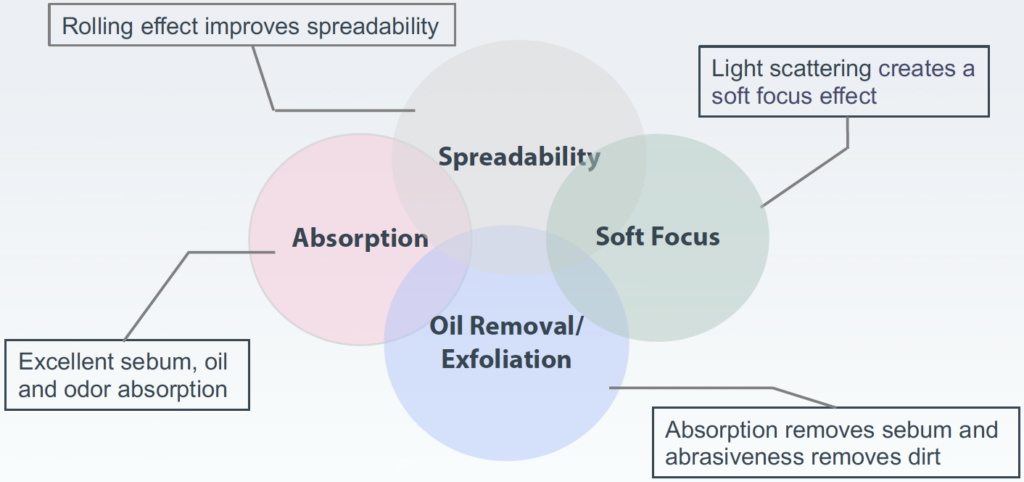
When suspended in a cream or emulsion, SOLESPHERE™ doesn’t simply sit passively. Instead, it participates actively by:
✅ Absorbing excess oil or volatile components upon application
✅ Modulating spreadability of the base to avoid clumping or uneven payoff
✅ Providing slip without greasiness, allowing for easy diffusion of pigment
✅ Enhancing setting through a controlled mattifying effect
SOLESPHERE™ | Particle Size | Surface Area | Pore Volume | Pore Diameter | Oil Absorption |
H-121 | 12 μm | 800 m²/g | 1.0 mL/g | 5 nm | 150 mL/100g |
H-53 | 5 μm | 700 m²/g | 2.0 mL/g | 11 nm | 400 mL/100g |
NP-100 | 10 μm | 50 m²/g | 0.1 mL/g | - | 35 mL/100g |
These performance qualities are grounded in repeatable data. The oil absorption capacity of SOLESPHERE™ averages between 120–300 mL/100g, depending on grade, making it an ideal oil-phase regulator for eye-area applications.
Application in Eye Formulation Prototypes
Formulators can leverage SOLESPHERE™ in a range of eye product formats, especially those requiring phase transitions or texture evolution:
Compatibility and Processing Advantages
Unlike many fillers, SOLESPHERE™ performs well across formulation types. It is non-reactive, chemically stable, and easily dispersible in both aqueous and oil phases, depending on the selected grade.
For formulators, this translates to:
✅ Streamlined process development—no complex milling or high-shear steps required
✅ High compatibility with silicones, esters, and synthetic emollients
✅ Good pigment load handling, allowing uniform dispersion and anti-caking benefits
Its thermal and pH stability also make SOLESPHERE™ adaptable for both hot-pour and cold-process applications.
Sensory Impact: Quantifiable and Perceptible
SOLESPHERE™ is more than a functional silica—it’s a tactile enhancer. Testing conducted by AGC has demonstrated consumer-perceivable improvements in feel, especially in categories where eye comfort and elegance are paramount.
Attributes cited include:
- “Smooth application with dry finish”
- “Lightweight, breathable texture”
- “Soft-focus appearance under bright lighting”
For consumers, this sensorial experience may be intangible. For formulators, it’s a product of the silica’s controlled particle size distribution and surface structure—variables that can be selected to match specific eye cosmetic needs.
Minimalist and Multifunctional Formulations
SOLESPHERE™ also aligns with the broader trend of formulation simplification. Its multifunctional properties—oil absorption, sensorial enhancement, soft-focus visual effect—reduce the need for multiple auxiliary ingredients like talc, starches, or synthetic elastomers.
This supports cleaner, more streamlined INCI lists, which are increasingly favored by brands and consumers alike. For formulators developing hybrid eye products that must meet both performance and “clean beauty” standards, SOLESPHERE™ offers a pragmatic solution.
Regulatory and Safety Assurance
As with all products in the eye category, safety is non-negotiable. SOLESPHERE™ is non-nano, non-irritating, and globally approved for use around the eyes. It meets stringent requirements for heavy metal content and microbiological purity, with particle morphology specifically designed to avoid respiratory or ocular risk.
Its proven history of safe use in eye-area applications gives developers confidence when moving into product validation and regulatory phases.
A Practical Ingredient for a Demanding Category
Hybrid eye products require nuanced design—technically, sensorially, and aesthetically. As textures evolve, so must the tools formulators use to build them. RESIFA™ SOLESPHERE™ offers a versatile, performance-driven silica solution for cream-to-powder transitions and beyond.
By enhancing sensory impact, controlling oil dynamics, and simplifying formulation architecture, SOLESPHERE™ enables the creation of eye products that don’t just meet expectations—they move them forward.
Explore AGC’s brochure for eye cosmetics with recommended grades and eye-area formulations featuring SOLESPHERE™ below or contact your Deveraux Specialties representative for formulation support.


